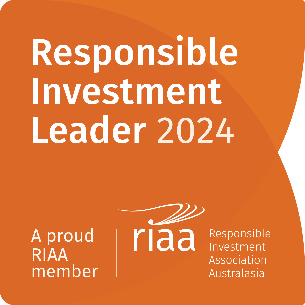Insights into corporate earnings in a COVID world

September 2020
August proved to be a huge month for global equities. For the major US indices, the S&P500 and the Dow Jones Industrial Average, it was in fact their best August performances since 1984, rallying 7.0% and 7.6% respectively. The tech heavy Nasdaq was up an extraordinary 9.6%! In Australia, the ASX200 Index finished up 2.8%, their best August return for 11-years, and the NZ market rose 1.8%. Driving this performance is policy. Central banks and governments have flooded the system with massive liquidity, economic growth is recovering, and capital is being diverted into risk assets such as equities. Although some commentators are frustrated by the apparent disconnect between the pricing of shares and the struggles that are currently besieging the real economy, the reality is that markets are very much following the same patterns that they have historically. When confidence builds around a view that economic and business outcomes will improve in the foreseeable future, investors will look forward and price shares on the basis of a more “normal” environment. If the current momentum in activity continues, that could be as early as second-half 2021.
The broad framework for this view is reasonably easy to understand, but less so is that the foundations for this cycle are evolving. During August the US Federal Reserve announced that, going forward, they are going to take a more flexible, and tolerant, approach to inflation whilst pursuing full employment. This is an incredibly significant announcement and means in practice that short-dated interest rates will be kept at low levels for a very long time to come (at least 5 years). This should ultimately be a strong influence on economic growth outcomes over the short to medium-term. The impact on markets, on the day that this announcement was delivered at the Economic Policy Symposium in Jackson Hole, was that stocks moved higher but so did long dated interest rates. This dynamic is important for investors to monitor and will influence market outcomes over the next 12-months.
Bull markets are complex. By definition they are a condition in which prices are rising, but what is less understood is that within them, there are quite distinct stages. Traditionally in these cycles, initial price leadership sits with those stocks that benefit most from liquidity-driven forces such as interest rate cuts. This is fully consistent with what has happened around the world since the Covid related sell-off in March. The types of stocks that lead indexes during this stage are those particularly sensitive to interest-rates such as high yielding utilities, and growth stocks such as the those within the Technology sector. As the cycle progresses though, market leadership begins a process of transition. Leadership begins to shift towards those companies which are more sensitive to the economic cycle and those considered as traditional “value” stocks (which are beneficiaries of improved pricing power via demand levels recovering). Typically, at this point, yield curves will also begin to steepen as longer-dated rates push higher. It is generally difficult to identify exactly when these conditions have been satisfied, but pricing activity over the past few weeks suggests we are certainly closer to the next stage of this cycle.
Despite the fascinating changes that are occurring across the global macro landscape, the past month has also been particularly useful for local investors with the August corporate reporting season taking place. Given the advent of Covid-19, this was one of the most anticipated seasons that we have seen for several years and in a general sense it delivered better outcomes than had been expected. In Australia, the overall impact of the results for companies listed on the ASX200, and their accompanying commentaries, resulted in profit downgrades of slightly more than 1% for the forthcoming year. On the face-of-it this might appear disappointing but if we were to exclude Commonwealth Bank, Qantas and Telstra from this analysis, then profit expectations would have actually improved. This is something of a rarity as typically analysts are overly optimistic going into reporting periods and their assumptions generally need to be hosed down. The positive sentiment around reporting broadly supported the returns achieved during the month.
A deeper dive into these results highlighted that one of the key drivers of positive surprise came from cost control. Management teams have responded to the challenges that are besetting their revenue lines by driving efficiencies through their organizations. Credible savings were achieved across many of their cost-lines but there was notable success achieved in managing salaries, interest charges and energy costs lower. The energy benefit that accrued was not simply a function of falling oil prices, but rather there were additional gains enjoyed through the implementation of strategies aimed at sustainability. Firms in this part of the world are following the global trend in this area and are increasingly satisfying their energy needs from more renewable sources. Not only is this good practice from an environmental perspective but it is also translating into better earnings outcomes. Good examples of this are the steps that Dominoes are taking to have their pizzas delivered with electric vehicles (50% in France and 30% in Germany) and the more energy efficient LED lighting being used across the Coles supermarket chain. Outside of these cost measures, the only major negative surprise for Australian companies reporting on their key earnings drivers during the past 6-months was New Zealand. The more draconian approach adopted around social distancing in this country weighed on the results of businesses with operations here. Examples of this included Ingham’s which suffered from disruptions to their distribution of their chickens and Invocare who commented on the impact on funeral services during the different Alert Levels.
Other observations for Australian stocks over the past month included the divergence in performance of the two heavyweight sectors, the Banks and the Commodity Producers. Whilst the Banks have been challenged over the past few years from many headwinds including regulation and competition, the impact of Covid has been particularly problematic for this sector. Not only has credit demand been negatively impacted, but the risks around bad debt provisioning has deteriorated. Although the outcomes to date have been well managed, due to government funding support for businesses, the medium-term prospects look difficult. These uncertainties have manifested themselves in more than $1bn of cuts to the forecast dividends for this sector. The Commodity stocks on the other hand have travelled through the recent economic turmoil in good shape. Supported by elevated commodity prices which have accrued through growth initiates in China, and Covid-related disruptions to mining operations in countries such as Brazil, the companies in this sector have delivered strong profit results. We also saw during August a lift in this Commodity sector’s guidance around capital returns of more than $1bn. This is almost a mirror image of the Banks!
In New Zealand, the experience for investors was also relatively productive during the profit season. Expectations for the past half-year were appropriately subdued, given the impact of our social distancing policies, but actual results were generally slightly better than had been assumed. Examples of this included Freightways and Vista Group. Fisher and Paykel Healthcare was also a star, providing a very strong trading update at their AGM. As much as the actual numbers were important for analysts during this time, the outlook comments by management teams were probably more influential. EBOS was an example of this where, after delivering a solid set of numbers, their share price found support (up 6.1%) after their management team also commented that “given EBOS’ scale and market leading positions in stable industries, as well as our strong balance sheet, we are well placed to respond to the challenges ahead”. New Zealand’s equity market continues to benefit from companies such as this - of high quality and under strong leadership.
Media headlines are naturally very negative with respect to most Covid reporting (“bad news sells papers” was the old expression) but behind the scenes there have been many positive developments including a collapse in mortality rates in much of Europe, better treatments and therapeutics, the strong possibility of credible vaccines over the next 6 months and saliva testing regimes that can produce accurate results at low cost within 90 minutes (this could be a bigger game changer than vaccines).
The world remains at the mercy of a multitude of forces. COVID-19 remains an ever-present threat but policy makers, in general, are responding to both the health aspects and the economic challenges. Financial markets are a leading indicator of this and continue to reflect the improving fundamentals. While there are undoubtably pockets of extreme overvaluation, particularly amongst tech stocks, in general solid progress is being made. The recent reporting season has given us insights into many corporations that will not only survive the current uncertainty but emerge from it stronger.





